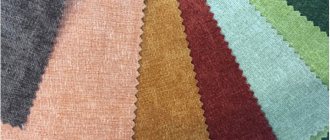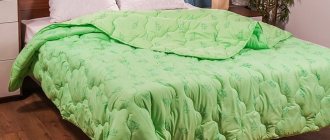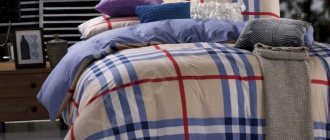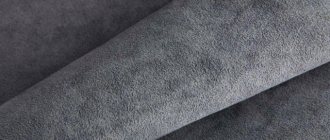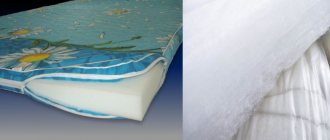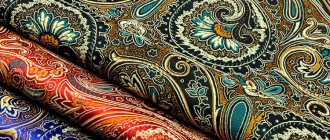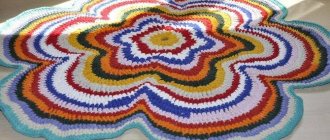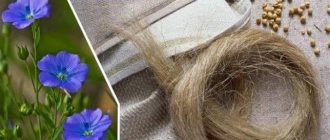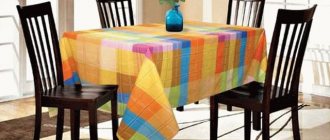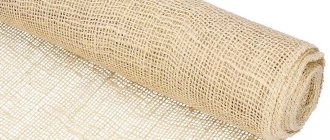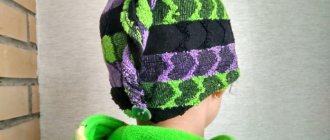The chemical industry is developing every day, so humanity receives various unique materials for its life. They are used to make products for various purposes. PVC is quite unique in terms of application and physical characteristics. It is especially worth highlighting from the line of products made from polyvinyl chloride - PVC fabric, which is a composite and predominantly two-layer fabric.
This fabric uses a durable mesh of Dacron, nylon or nylon thread as a base, which is coated with PVC and elastic plasticizers (mainly vinyl polymers). Thanks to this, the fabric becomes durable and very strong. The material is often used to make boats for recreation and fishing, awnings, advertising products, etc.
Large selection of colors
Methods for making PVC fabric or PVC awning
The main methods for producing PVC fabric are lamination and casting. In the first case, a PVC film is applied to the prepared base (a mesh of polyester, nylon or lavsan). This method is considered simple, inexpensive and less labor-intensive, so it is the most common. The second method is based on the incorporation of polyvinyl chloride into the existing base by melting. It is expensive and is used less frequently, although the fabrics obtained in this way are reliable, and they are less likely to delaminate even from severe frosts and mechanical stress.
In addition, a layer of varnish is often applied to polyvinyl chloride fabric and various additives are included in its composition, this makes it possible to increase the performance properties of the material and protect it from ultraviolet radiation. In addition, the varnish allows you to practically eliminate the adhesion of dirt to the canvas. When varnishing, both sides are tightly covered with acrylic or Teflon varnish.
The inclusion of plasticizers in the composition of the fabric can increase its strength, make it lighter and less waterproof. Adding polyurethane to the material makes it elastic and abrasion-resistant.
Material structure
Important! When choosing PVC fabric, you need to pay attention to products from well-known manufacturers, this will avoid purchasing low-quality material.
Accordingly, the money will be well spent.
Film
In tent production, PVC film and thermopolyurethane film are used.
The properties of PVC film are more acceptable for our Eastern European climate:
- PVC film – made from polyvinyl chloride compounds.
- Film thickness 500, 650,700 microns (0.5 – 0.65 – 0.7 mm).
- PVC film does not have weaving threads in its structure. Its strength and resistance to UV is achieved by the properties of the bonds of the chemical composition.
- PVC film is not afraid of frost. Temperature range from – 40 to +70 0С.
- Every year the transparency of canvases decreases by 5%.
- The width of the canvas is 1.4 m and 1.6 m (film 700 microns).
- PVC film stretches within 1 cm for every 1.5 meters of length.
- The service life of PVC film reaches 10 or even more years.
- Products (PVC curtains) made of transparent PVC film will last more than 15 years, provided that the curtains are firmly fastened around the perimeter.
- For the manufacture of large products, the method of welding sheets is used. The seam is approximately 1.5 - 2 cm, transparent, monolithic.
Recommendations for using PVC film:
- Caustic chemicals (alkaline, alcohol) can cause the paintings to become cloudy. You should avoid using them to care for transparent PVC curtains.
- For the care and washing of PVC sheets, clean water under pressure and a soft, moisture-absorbing cloth are suitable. To add shine after washing with water, curtains made of PVC film can be rubbed with a product that cares for the plastic of car panels, having first tested it on a test canvas.
- When the air temperature drops below 5 degrees. PVC film is afraid of frost, creases, bends, and sudden creases. This can lead to the formation of chips and cracks in the canvas.
- The only method of repairing a transparent PVC curtain is to replace it. If you ordered it from us, we will replace it with a 15% discount on the cost of the product “for self-installation”.
- With prolonged high air humidity, the PVC film may “turn white” - this is condensation. The structure of the film is porous, therefore, when moisture has nowhere to go, it is distributed in the canvas and fills the finely bubbled, porous structure of the film canvas. The condensation will evaporate or freeze in sunny, warm or frosty weather. The “evaporation” process can take from 3 to 7 days. You can “dry” accumulated moisture faster by forced, directed heating of the air around the canvases.
- To avoid the accumulation of condensation in rolled curtains above the opening, you can roll them onto the inner surface of the opening. Curtains must be rolled dry.
- PVC film tends to shrink in a relaxed (not tensioned on the staples) state. Curtains cannot be left rolled over the opening all summer.
- We recommend periodically stretching the curtains onto the bracket, or completely removing them from the openings, winding them onto a tight roller (you can request this from us when purchasing PVC curtains) and storing the evenly wound PVC curtains on a reel, in a dry room with an even temperature. Following this recommendation will extend the life of curtains in good condition for more than 5-7 years!
Our calculator will help you calculate the approximate cost of curtains made of transparent PVC film!
Properties of TPU film (thermopolyurethane film):
- Film thickness 0.5 mm and 0.7 mm;
- material density 605 g/m2;
- roll width 1.4 m;
- has high puncture and tear strength;
- soft and elastic in the cold;
- refers to gas-containing materials;
- Suitable for use in damp environments and water;
- withstands temperatures from – 40 °C to +150 0C;
- resistant to chemicals;
- The material is non-toxic and harmless for human use.
According to its technical characteristics and properties, TPU film is very convenient to use in winter as protection from snow, rain and wind, it is durable like “armor”, is not afraid of creases in the cold and creates a barrier that retains heat in a room where there is forced heating . But, there is a very significant drawback - fragility, because... Under the influence of the UV spectrum (sun rays), thermopolyurethane film acquires a yellow-rusty tint and quickly deteriorates. The service life of such outdoor curtains is 2-3 times shorter than PVC films.
If you have any questions, call us! Our contacts are here!
Tinted PVC film has the same characteristics as standard transparent PVC film (thickness 700 microns (0.7 mm), temperature tolerances from -30 to +70 degrees C, as well as service life and method of manufacturing and installation of products from PVC films).
Main characteristics
- density - from 200 to 1500 g/m²;
- strength up to 4000 N/5cm;
- the weave of threads in the base of the material can have different ratios (the most common options: 6×6; 7×7; 8×8; 9×9; 12×12).
- tensile strength - from 700 to 850 kg/m;
- temperature range - from +75 to −30˚С (frost-resistant fabrics up to −50-60˚С).
- service life - up to 15 years.
You might be interested in what types of cellular tissue there are, features of the English cell
When choosing a dense material, it is necessary to take into account all its properties, because the quality of the product or structure made from it will depend on this. At the same time, it is not rational to buy a canvas with high characteristics, for example, for a regular canopy.
Story
Polyvinyl chloride was first produced from vinyl chloride in 1835 by Henri Victor Regnault in France. This happened during random experiments. The scientist’s notes have been preserved, in which he was unable to characterize and name the resulting substance.
The next wave of research into the polyvinyl chloride compound dates back to 1878. But even then there was no use for it and the experiments were suspended.
In 1913, in Germany, chemist Fritz Klatte, having studied the properties of the substance, patented the production of PVC. The outbreak of the First World War prevented the implementation of his ideas.
Almost in parallel with Klatte in Germany, polyvinyl chloride was studied by Waldo Silon in America. In 1926, he patented the idea of creating bathroom curtains from the new fiber.
Industrial production of objects from the new material began in 1931.
In less than 15 years, polyvinyl chloride fabric has become firmly established in many industries. They also began to make dishes, household items, automobile parts, etc. from it.
Types of fabrics
PVC fabric comes in the following types:
- Air-containing (for making boats).
PVC boats
- Cloths with antistatic coating for the oil and gas industry.
Floating PVC Oil Spill Fences
- Fabrics for storing water in agriculture, for fire fighting, etc.
PVC water tank
- Material for arranging various outdoor canopies, tents and other structures.
PVC canopy
- Material for car awnings.
PVC awning for trailer
- Fabrics for the manufacture of sports and play equipment (gymnastic mats, swimming mattresses, swimming pools, etc.).
Children's play equipment made of polyvinyl chloride
- Material for architectural objects and structures.
Prefabricated pavilion made of polyvinyl chloride
- Canvases for the production of advertising structures.
Advertising banner made of polyvinyl chloride
. The material can be:
- one-sided;
- bilateral;
- reinforced (more durable and safer);
- unreinforced (for example, a simple film used to make children's swimming circles, etc.).
- multilayer;
- single layer.
On average, a roll of material costs 100-25,000 rubles, with the price depending on the type of material. For example, 25,000 rubles. banner products are expensive because high demands are placed on them.*
Pipe diameters
So, to create a plumbing or heating system, you have chosen reinforced polypropylene. What size pipe diameters will you need in this case? Manufacturers produce reinforced pipes in a huge range: from 16 to 1200 mm in diameter. However, for domestic water supply and heating systems, pipes from 16 to 32 mm are used, for sewerage (internal) - 40, 50 or 110 mm in diameter. The largest polypropylene pipes are used in the installation of external sewer pipelines of multi-storey buildings and even entire microdistricts.
For cold water supply in residential premises, the choice of pipe diameter depends on the number of water supply points and the length of the pipeline. As a rule, the supply pipe has a diameter of 32 mm; for wiring in an apartment, the outer diameter ranges from 16 to 20 mm.
Reinforced PVC
This material has a multilayer structure, which is based on a durable cord (synthetic polyester fabric) coated on both sides with polyvinyl chloride. Thanks to this, it is considered ideal for the manufacture of boats, awnings and other critical products.
The multilayer structure of reinforced PVC fabric consists of:
- Top layer PVC;
- Adhesive layer (responsible for adhesion of polyvinyl chloride to the base);
- Cord (base);
- Second layer of adhesive;
- Bottom layer of PVC.
Structure of reinforced polyvinyl chloride
Fabric reinforced with PVC is characterized by increased resistance to friction and mechanical damage, water resistance and resistance to temperature changes. This makes it more durable and in demand in the production of a variety of high-quality products (boats, sporting goods, awnings, etc.).
When choosing a material, its density is mainly taken into account, since the strength of the product made from fabric will depend on this. You can even evaluate the quality of the material by touch; for this purpose, almost every product is equipped with a piece of PVC fabric (this patch is provided, for example, for repairing boats).
You might be interested in Description of textiles, as well as textile products
Note! Reinforced PVC is used in the most critical structures and demanding products.
This is due to the fact that this coating is very strong, wear-resistant and durable.
Awning material
Tent PVC material:
- Not transparent.
- Airtight.
- Waterproof.
- Colors - white, beige and yellow - are light-transmitting, blue, brown, green, etc. - provide darkness in the rooms.
- Resistant to creasing, bending, breaks, etc. in the cold.
- Stable against stretching in the heat.
- Tensile strength 250 kg/cm2.
- Does not support combustion.
- Not subject to mandatory certification.
- Temperature conditions for use are from -30 to +70 °C.
- Used as edging in the construction of soft windows.
Application area
PVC fabrics are used to make:
- boats;
- awnings (for railway cars, cars, boats and yachts);
- awnings;
- canopies;
- advertising banners;
- container roofs;
- industrial curtains and hangars;
- shelters for drilling rigs;
- field storage facilities for agricultural products and building materials;
- canopies to protect work sites from precipitation (snow, wind or rain);
It is also heavily used as waterproofing, in the construction of temporary warehouses. In addition, it is used in the construction of tents, pavilions, summer cafes, sales tents, gazebos, garden awnings and livestock farms. Various curtains are also made from it.
Curtain made of polyvinyl chloride
Sports and children's equipment (mats, tatami, play complexes, etc.), inflatable attractions and cheesecake-type sleds are also made from PVC fabrics. In this case, the highest quality, durable and wear-resistant material is chosen.
Curtains, curtains, windows, etc. are made from transparent material.
Transparent PVC
Choose what interests you?
| Types and types of hangars | Purpose of the hangar | Services and types of work | Design |
| Metal hangars Frame hangars Prefabricated hangars Sandwich panel hangars Tent hangars Insulated hangar Cold hangar | Cow barns Pig farms Poultry houses Granaries Industrial hangars Trade hangars | Construction of hangars Design of hangars Production and manufacture of hangars Installation and installation of hangars Insulation of hangars Repair and dismantling of hangars | Hangar frameFencing structuresSchemes and drawings of hangarsRoofing for hangarsGates for hangarsTypical hangar design |
Features of operation
During the operation of products made from PVC fabrics, it is necessary to:
- Follow the rules of care (to do this, you must carefully study the instructions that manufacturers include with any product).
- Curtains, mattresses, and raincoats made of PVC cannot be washed in a washing machine.
- It is prohibited to use caustic chlorine-containing substances and solvents to wash products made from PVC fabrics.
- The material should be washed and cleaned using warm soapy water, a sponge or a soft brush. To do this, treat the surface of the fabric with a soap solution, then wait 5-10 minutes for it to saturate the material well. Then the surface is treated with a sponge or brush, after which the soap solution is washed off with warm water. If necessary, repeat the procedure. This is especially true for window material.
- Heavy stains cannot be removed with soapy water, so you need to use special detergents. For example, you can use Nerta, Cleanol, etc. After treating the material with detergent, you also need to wait 5-10 minutes, after which the product can be cleaned and washed.
- PVC products need to be dried well after getting wet so that they do not rot or become moldy.
- It is necessary to carefully roll the products so that strong folds do not form on the material.
- PVC products are dangerous to burn.
You might be interested Instructions for beginners for step-by-step creation of Romanian lace
Important! Subject to operating conditions, the characteristics of PVC awning fabric will remain unchanged throughout its entire service life.
Disadvantages of aluminum reinforcement
Pipes with external reinforcement are more popular due to their affordable price. But they also have disadvantages. During installation, stripping of the aluminum layer along the length of the connection with the fitting is required. In addition, during installation or careless operation of such a pipe, the outer reinforcing layer can be damaged, which will subsequently affect the technical condition of the structure.
A polypropylene pipe reinforced with aluminum inside is more durable. It does not require complex preparation during installation. But it is necessary to take into account another feature of the connections - for reliable and tight soldering, the edges of the parts must be carefully trimmed, in other words, the pipe cut must be as smooth and strictly vertical as possible, otherwise the connection will present an unpleasant surprise during operation. Once the heating system is filled, the pressure will squeeze water out even through the slightest gaps.
Banninger (Germany)
The German company produces excellent products that are distinguished by the highest quality and operational reliability. The buyer can easily find it in store windows by its emerald green color.
In conclusion, I would like to recommend our readers not to buy reinforced polypropylene from unknown companies that do not even indicate the name of their brand on the label. Having saved a small amount when purchasing, you can lose significantly more money (nerves, time) when low-quality products let you down. And this happens, as a rule, at the most inopportune moment.
